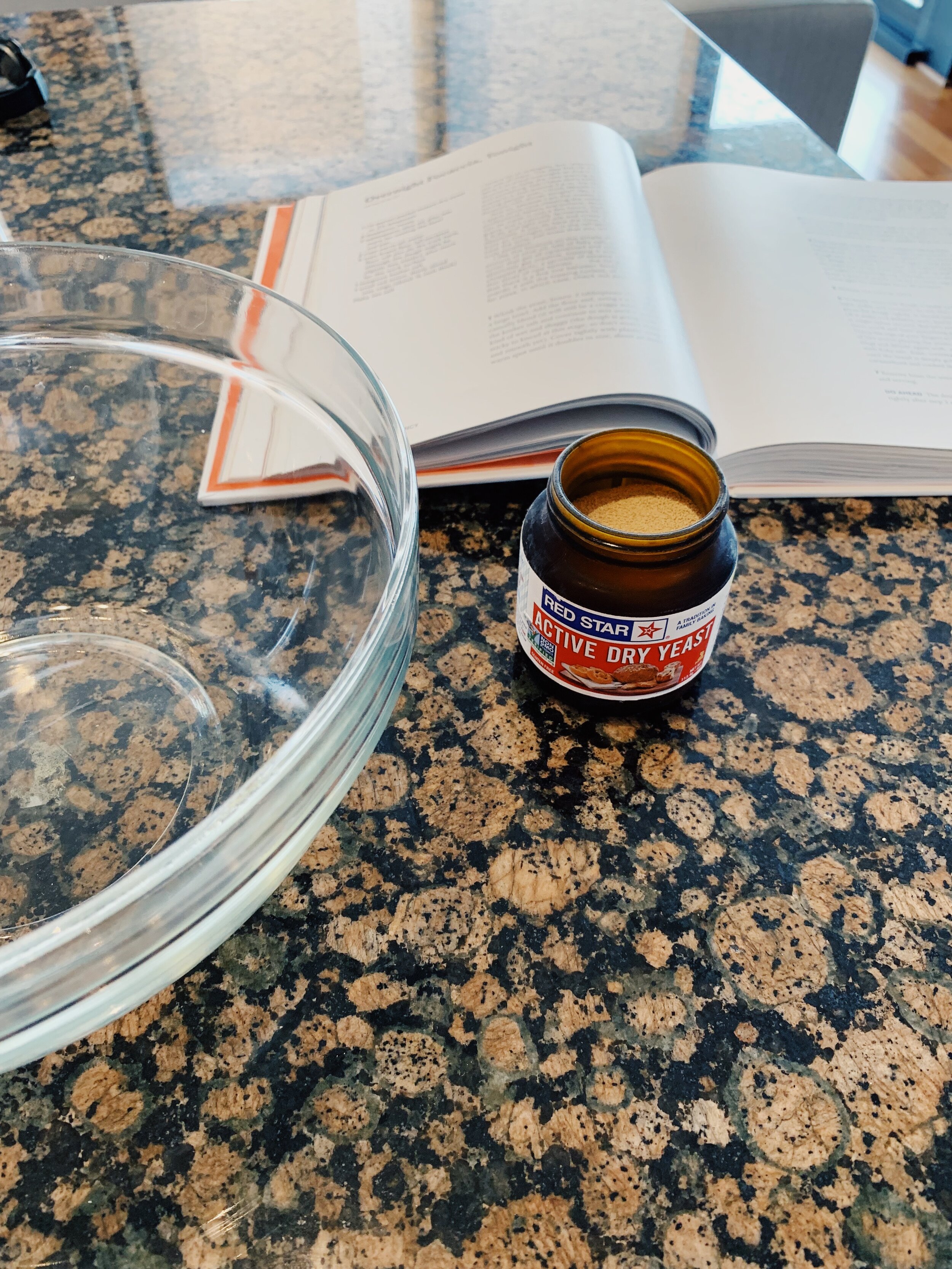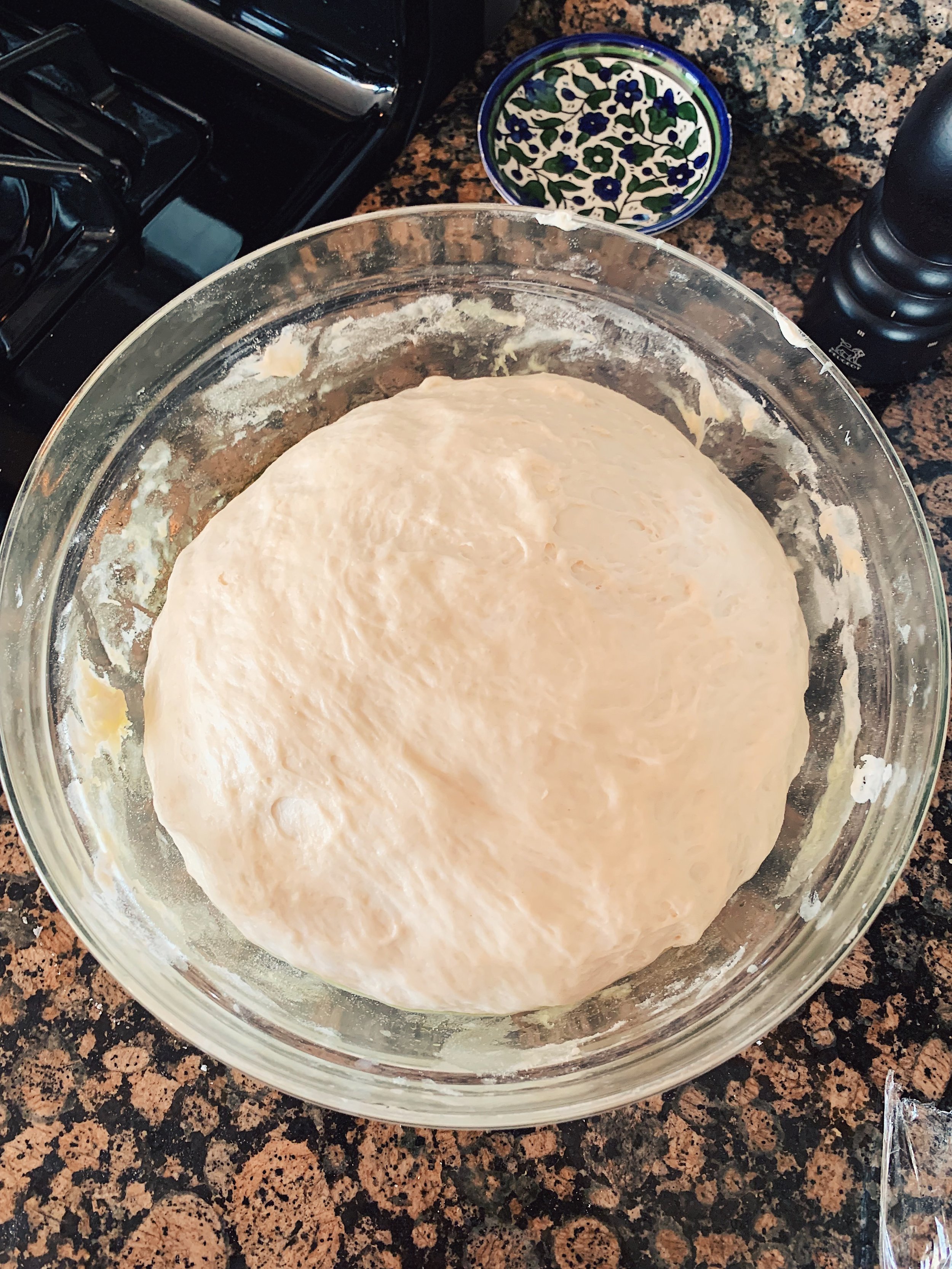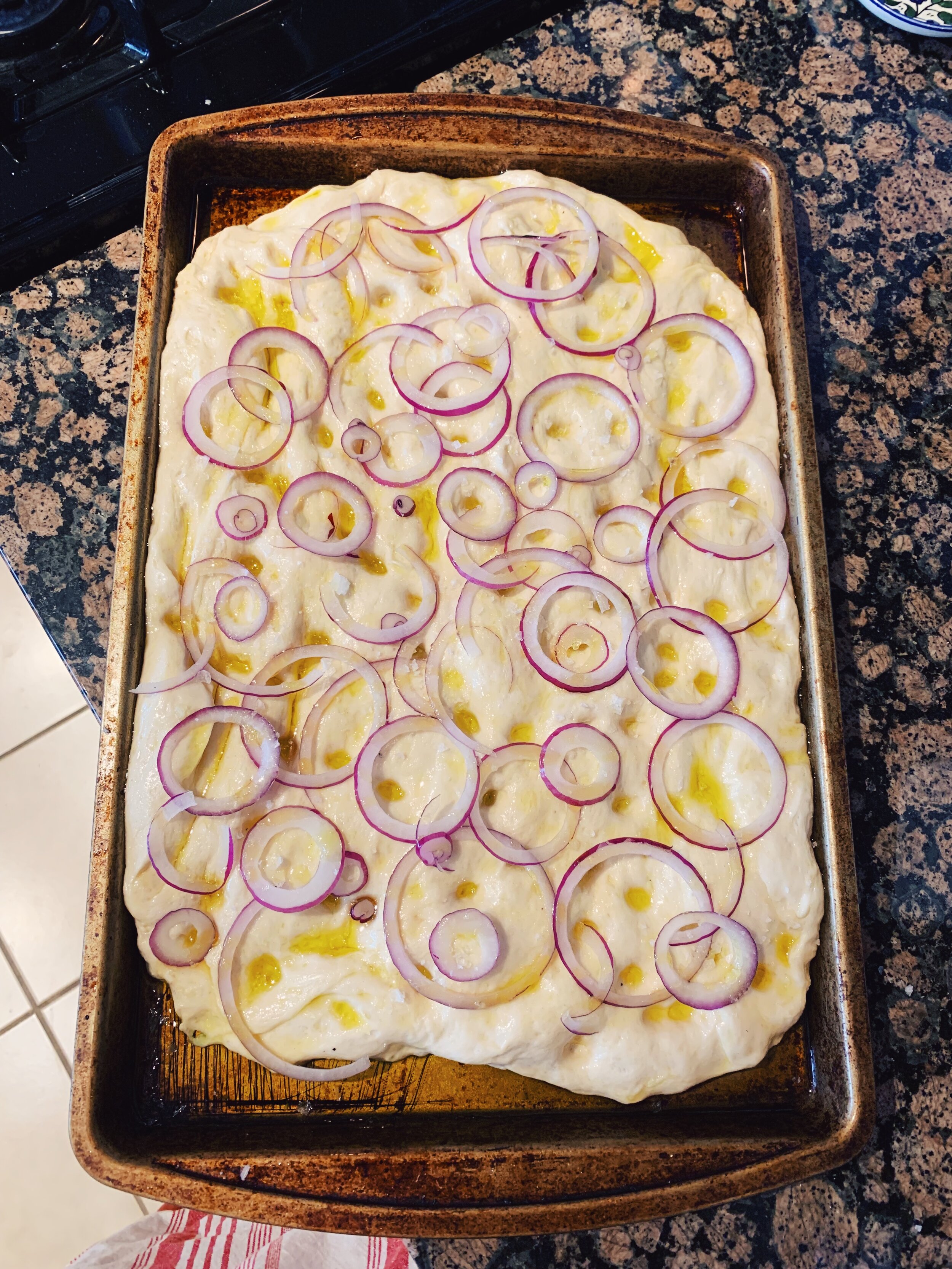(This is the third installment of the “Life is often a lot like” series. The other two installments are here and here.)
Life is often a lot like making focaccia bread. From the very beginning, you’re full of doubt. For one thing, the ingredients seem insufficient for the task. You struggle to imagine how tiny grains of yeast, water, oil, and flour can possibly form a pillowy dough large enough to fill a baking sheet. The tools before you feel lacking, which sometimes translates to the lie that you yourself are lacking. The lie is so potent, you consider forgoing bread for dinner altogether. I mean, think of the carbs. But also, think of all those delicious carbs…
Remember what Jill said, failure is where character is formed. Make the bread, learn the lesson, let the yeast do what it was created to do. With a heart divided between doubt and hope, you begin to whisk. Whisking water, yeast, and oil until well combined, nothing you haven’t done before.
Now to add the flour. Five cups of bread flour. You scoop one half cup at a time, feigning carefulness. When really one large dumping of flour would yield the same result. Doubt creeps in again. That’s a lot of dry flour for that amount of liquid. You struggle to incorporate it all with your wooden spoon. You put your whole body to work, leaning into the stirring, the scraping up of dry bits of flour, the combining of a craggy mess. Everything’s a mess. Where’s my apron? Now for a big decision: follow your instinct to add a teaspoon of water for those last grains of flour or forgo your idea for the sake of following instructions. What happens when the rules go against your sense of right and wrong? Which do you discard? Worry about the moral implications of that question later. You’re making focaccia, remember? You add the teaspoon of water before you can face more doubt, and move onto what you, and the bread, require: rest.
Rest for a whole hour. Cover it with plastic and let time carry the weight of the process. Sometimes doing nothing is the most productive decision of all. Funny how often you forget that truth. An hour later, and the dough has indeed doubled in size. You sprinkle your counter with flour and knead the dough, pushing it with your palm and letting it fold onto itself. Over and over, and quickly, until the surface appears smooth and elastic. You coat the bowl with olive oil and put the dough back down for another nap. You’re still surprised that the dough doubles in size, though it’s only because yeast keeps doing it’s job. Me of little faith.
Light, airy, and sticky, you turn the dough out on a well-oiled baking sheet, pushing it out to the edges, so it can rest for one final hour. If there’s one lesson to learn from bread, it’s that good things happen to those who nap.
Turn on the oven, slice an onion, have flaky salt and more oil at the ready. You play the risen dough like a piano, plucking keys, pressing your fingertips to dimple the surface. Scatter the remaining ingredients and watch as the bread turns a golden brown. You spy on the baking bread and wonder why you ever doubted those tiny grains of yeast. After all, you’ve been told your whole life that, “though she be little, she is fierce.”
146 recipes cooked, 79 to go.
















